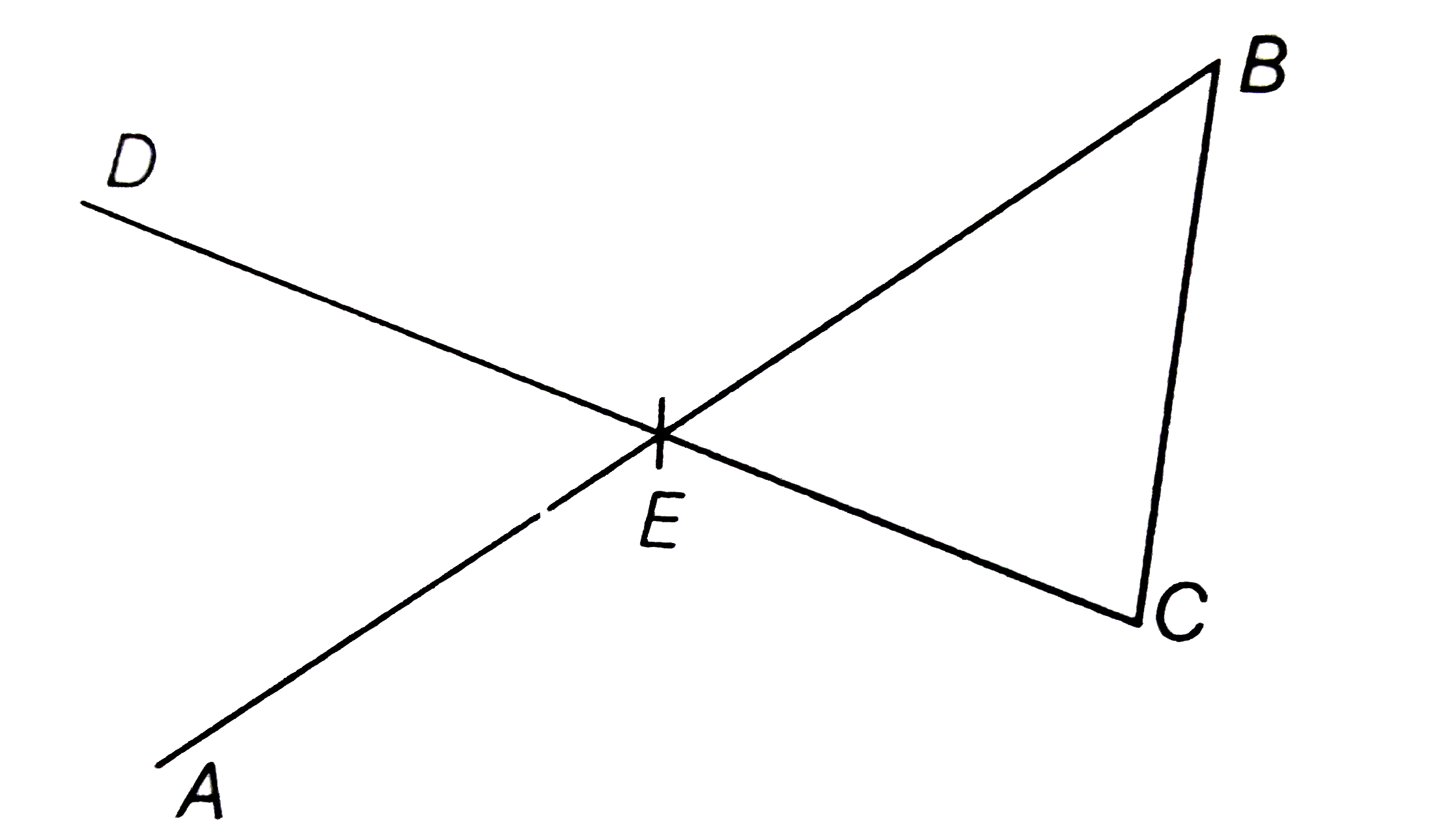A,B C and dD are four points such that −−→AB=m(2ˆi−6ˆj+2ˆk)−−→BC=(ˆi−2ˆj)and−−→CD=n(−6ˆi+15ˆj−3ˆk). If CD intersects AB at some points E, then
m≥12
n≥13
m=n
m<n
The correct Answer is:A, B
Let EB=p AB and CE =qCD
Then 0<pandq≤1

Since, EB+BC+CE=0
pm(2ˆi−6ˆj+2ˆk)+(2ˆi−2ˆj)+qn(−6ˆi+15ˆj−3ˆk)=0
⇒(2pm+1−6qn)ˆi+(−6pm−2+15qn)ˆj+(2pm−6qn)ˆk=0
⇒2pm−6qn+1=0,
−6pm−2+15qn=0
2pm−6qn=0
Solving these, we get
p=1(2m)andq=1(3n)
∴0<1(2m)≤1and0<1(3n)≤1
⇒m≥12andn≥13
Topper's Solved these Questions
- BOOK - ARIHANT MATHS ENGLISHCHAPTER - VECTOR ALGEBRAEXERCISE - Exercise For Session 17videos
VECTOR ALGEBRA
- BOOK - ARIHANT MATHS ENGLISHCHAPTER - VECTOR ALGEBRAEXERCISE - Exercise For Session 217videos
VECTOR ALGEBRA
- BOOK - ARIHANT MATHS ENGLISHCHAPTER - TRIGONOMETRIC FUNCTIONS AND IDENTITIESEXERCISE - Exercise (Questions Asked In Previous 13 Years Exam)19videos
TRIGONOMETRIC FUNCTIONS AND IDENTITIES
Similar Questions
if A=2ˆi−3ˆj+7ˆk,B=ˆi+2ˆjandC=ˆj−ˆk. Find A(B×C)
View Solutionif A=2ˆi−3ˆj+7ˆk,B=ˆi+2ˆjandC=ˆj−ˆk. Find A(B×C)
View SolutionIn a ΔABC, if −−→AB=ˆi−7ˆj+ˆkand−−→BC=3ˆj+ˆj+2ˆk, then ∣∣∣−−→CA∣∣∣=
View SolutionIf −−→OA=2ˆi−ˆj+ˆk,−−→OB=ˆi−3ˆj−5ˆkand−−→OC=3ˆi−3ˆj−3ˆk then show that CB is perpendicular to AC.
View SolutionThe angle between the line →r=(5ˆi−ˆj−4ˆk)+λ(2ˆi−ˆj+ˆk)and the plane →r.(3ˆi−4ˆj−ˆk)+5=0 is
View SolutionIf →r=3ˆi+2ˆj−5ˆk,→a=2ˆi−ˆj+ˆk,→b=ˆi+3ˆj−2ˆk and→c=−2ˆi+ˆj−3ˆk such that ˆr=x→a+y→b+z→c then
View SolutionGiven two vectors →a=−ˆi+2ˆj+2ˆkand→b=−2ˆi+ˆj+2ˆk
find ∣∣→a×→b∣∣View SolutionABCD is a parallelogram with −−→AC=ˆi−2ˆj+ˆk and −−→BD=−ˆi+2ˆj−5ˆk. Area of this parallelogram is equal to:
View SolutionThe position vectors of the points A, B, C are 2ˆi+ˆj−ˆk,3ˆi−2ˆj+ˆkandˆi+4ˆj−3ˆk respectively . These points
View SolutionThe position vectors of the points A, B, C are 2ˆi+ˆj−ˆk,3ˆi−2ˆj+ˆkandˆi+4ˆj−3ˆk respectively . These points
View Solution

